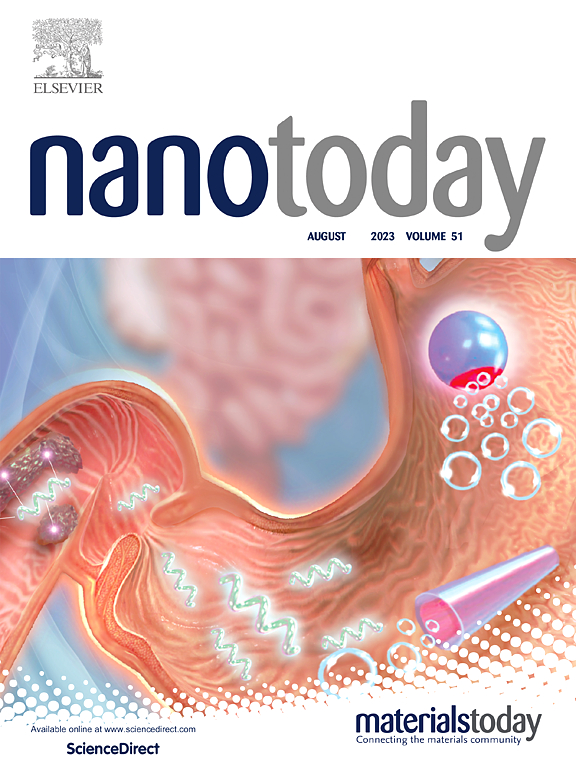Engineering inhalable nanomedicines to navigate lung barriers for effective pulmonary fibrosis therapy
IF 10.9
1区 材料科学
Q1 CHEMISTRY, MULTIDISCIPLINARY
引用次数: 0
Abstract
Pulmonary fibrosis (PF) is a chronic and progressive interstitial lung disease characterized by abnormal scarring of lung tissue, which severely impairs respiratory function and diminishes quality of life. Despite the availability of antifibrotic and immunosuppressive treatments, therapeutic outcomes remain limited. Inhalable nanomedicines represent a promising approach to address the limitations of traditional therapies by overcoming the lung’s complex physiological and pathological barriers, such as respiratory airflow dynamics, mucus absorption, macrophage clearance, surfactant interactions, and the influence of the lung microbiome. This review delves into the intricate interactions between inhalable nanoparticles and the lung environment, exploring recent advancements in nanotechnology that enable efficient and targeted drug delivery to the fibrotic lung. Key areas of focus include optimizing nanoparticle design, overcoming lung barriers, addressing the challenges of fibrotic pathology, and leveraging biomimetic and “smart” approaches for targeted therapies. This work aims to provide insights into the future of inhalable nanomedicines, paving the way for more effective, personalized treatments for pulmonary fibrosis with improved therapeutic outcomes and minimal side effects.
设计可吸入的纳米药物以穿越肺屏障,有效治疗肺纤维化
肺纤维化(PF)是一种慢性进行性间质性肺疾病,以肺组织异常瘢痕形成为特征,严重损害呼吸功能,降低生活质量。尽管有抗纤维化和免疫抑制治疗,但治疗效果仍然有限。可吸入纳米药物通过克服肺部复杂的生理和病理障碍,如呼吸气流动力学、粘液吸收、巨噬细胞清除、表面活性剂相互作用和肺微生物组的影响,代表了一种解决传统治疗局限性的有前途的方法。本综述深入研究了可吸入纳米颗粒与肺环境之间复杂的相互作用,探索了纳米技术的最新进展,使药物能够有效地靶向递送到纤维化肺。重点领域包括优化纳米颗粒设计,克服肺屏障,解决纤维化病理的挑战,以及利用仿生和“智能”方法进行靶向治疗。这项工作旨在为可吸入纳米药物的未来提供见解,为更有效、个性化的肺纤维化治疗铺平道路,改善治疗效果,减少副作用。
本文章由计算机程序翻译,如有差异,请以英文原文为准。
求助全文
约1分钟内获得全文
求助全文
来源期刊

Nano Today
工程技术-材料科学:综合
CiteScore
21.50
自引率
3.40%
发文量
305
审稿时长
40 days
期刊介绍:
Nano Today is a journal dedicated to publishing influential and innovative work in the field of nanoscience and technology. It covers a wide range of subject areas including biomaterials, materials chemistry, materials science, chemistry, bioengineering, biochemistry, genetics and molecular biology, engineering, and nanotechnology. The journal considers articles that inform readers about the latest research, breakthroughs, and topical issues in these fields. It provides comprehensive coverage through a mixture of peer-reviewed articles, research news, and information on key developments. Nano Today is abstracted and indexed in Science Citation Index, Ei Compendex, Embase, Scopus, and INSPEC.
 求助内容:
求助内容: 应助结果提醒方式:
应助结果提醒方式:


